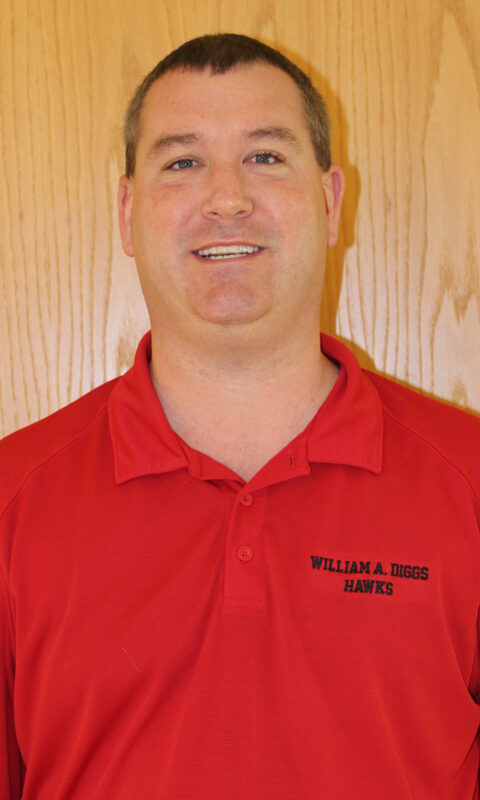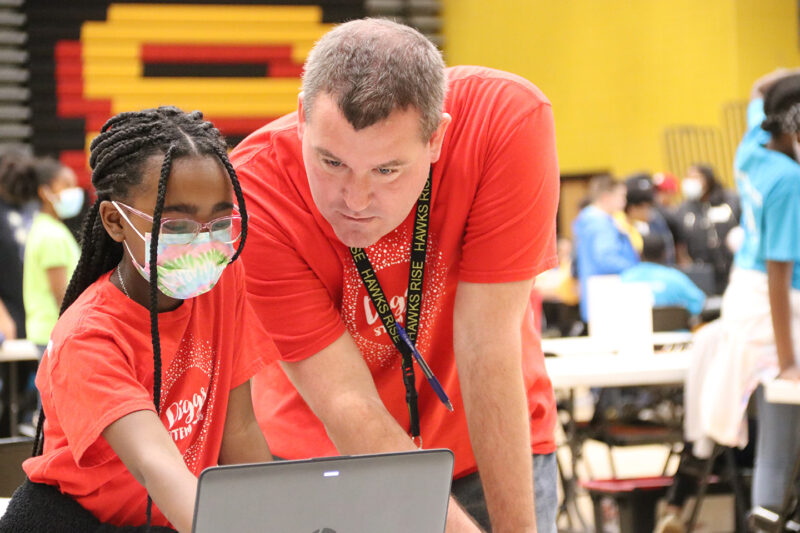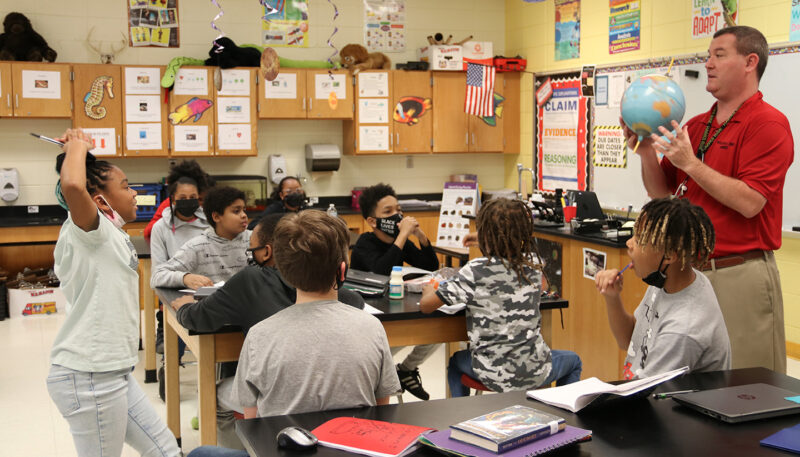 When his principal asked if he was interested in moving from teaching fifth grade to taking over as the school’s science teacher, Michael Johnson experienced a brief moment of doubt. Science wasn’t his favorite subject when he was in high school, but he was excited for the challenge. And he quickly developed an appreciation for science. “I jumped right into it and started loving it,” Johnson said.
When his principal asked if he was interested in moving from teaching fifth grade to taking over as the school’s science teacher, Michael Johnson experienced a brief moment of doubt. Science wasn’t his favorite subject when he was in high school, but he was excited for the challenge. And he quickly developed an appreciation for science. “I jumped right into it and started loving it,” Johnson said.
The eagerness to try something new, to experiment and learn how and why things work the way they work — while taking elementary school students with him along the way — has earned Johnson a spot among a select few in the state as a finalist for the Presidential Awards for Excellence in Mathematics and Science Teaching.
The Presidential Awards for Excellence in Mathematics and Science Teaching (PAEMST) are the highest honors given by the U.S. government for teaching science, technology, engineering, mathematics, and/or computer science teaching to students in prekindergarten to 12th grade. The awards were established by Congress in 1983, and the president can recognize up to 108 teachers each year. The award recognizes teachers who have both deep content knowledge of the subject they teach and the ability to motivate and enable students to be successful in those areas.
“He motivates his students by making the learning process exciting and relevant while maintaining a high level of rigor,” Leigh Ann Anderson, CCPS science resource teacher for Grades kindergarten through 8, said. “He is a leader, fosters cooperative relationships with the community, has a broad depth of science knowledge, creates lessons that promote student learning, and sparks excitement in all of his students.”
In science class, elementary school students are introduced to chemistry, environmental science, biology, Earth science, engineering and bit of biology. “Students want hands-on, interactive labs,” Johnson said. “That’s where they get the most out of it.”
“Students are always excited to go to Mr. Johnson’s science class,” Diggs’ Principal Debra Calvert said. “He makes learning fun by engaging students in the learning process. Whether he is capturing their attention by conducting an experiment, having students build models to test scientific principles or planning ways to capture students’ attention, there is always something new and amazing happening in the science lab.”
There are a few experiments that students mark as a sort of rite of passage in elementary school. The egg drop is a highlight of fourth grade, an experiment that combines physics, material science and fluid dynamics. There’s excitement surrounding the day students test out Pop Rockets which are paper rockets they built, watching them whiz down a hallway and — if they’re lucky — knock against the ceiling. That experiment has students collecting and studying data about the energy needed for the launch as well as comparing the height of the launch when compared to the size and weight of the rocket.
Coupled with any lab or experiment overseen by Johnson is how it ties to the real world. “When we look at science, we are looking through a real-world lens,” Johnson said of teaching young students. “This is how this applies to you and your life. It’s getting kids to see this is why this works the way it works,” he said. “It helps them see the connections and tie everything in.”
Students enter the lab eager to talk about what is going on in the world. “They bring up things that are happening. They want to talk about things that are happening in the world,” Johnson said. “If there’s a tsunami the night before, we talk about it. ‘OK, this is what happened and why it happened.’ They can take that and now they are having conversations with their parents.”
At Diggs, Johnson is a co-coordinator of the MESA and SeaPerch teams. He is the coordinator for the Science Center and social committee at the school and runs its STEM Nights.
“Our community — if you say the word ‘STEM,’ they’re in,” Johnson said, adding that Diggs is now incorporating the arts into STEM, making it STEAM. With the support of staff and parents, Diggs’ students have flourished in SeaPerch, a program in which students build an underwater vehicle controlled by remote. “We’re one of three elementary teams in the county and were the first elementary school teams in the county. We’ve qualified for the international SeaPerch competition against middle schools for the last four years,” he said.
Recently the Maryland State Department of Education (MSDE) announced Johnson as one of six state finalists for the 2022 PAEMST recognition. There are three mathematics teachers and three science teachers. Winners will be announced early next year. The National Science Foundation (NSF) administers PAEMST on behalf of The White House Office of Science and Technology Policy. Each Presidential Awardee receives a certificate signed by the President of the United States, a $10,000 award from NSF, and an all-expenses paid trip for an award ceremony in Washington, D.C.





